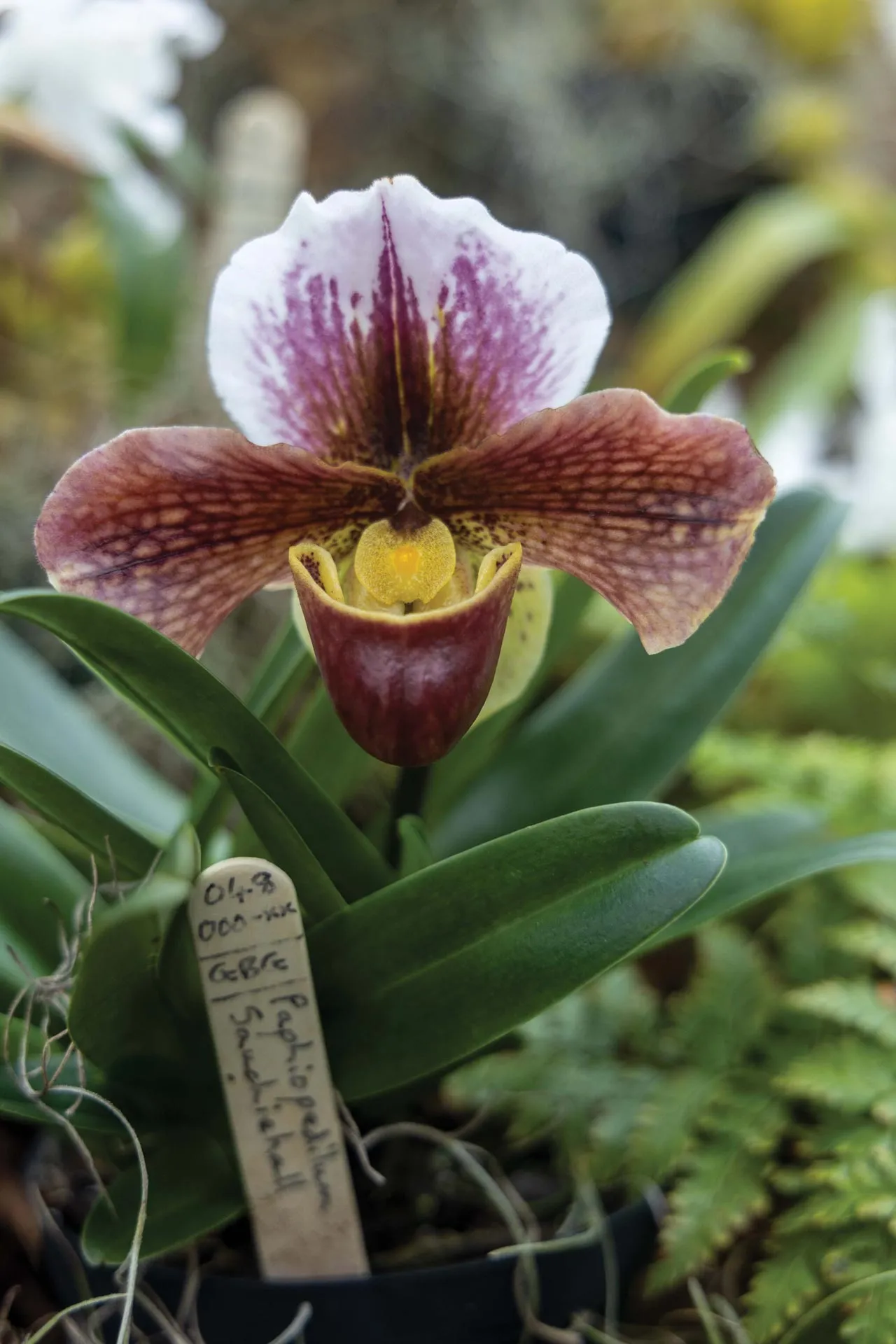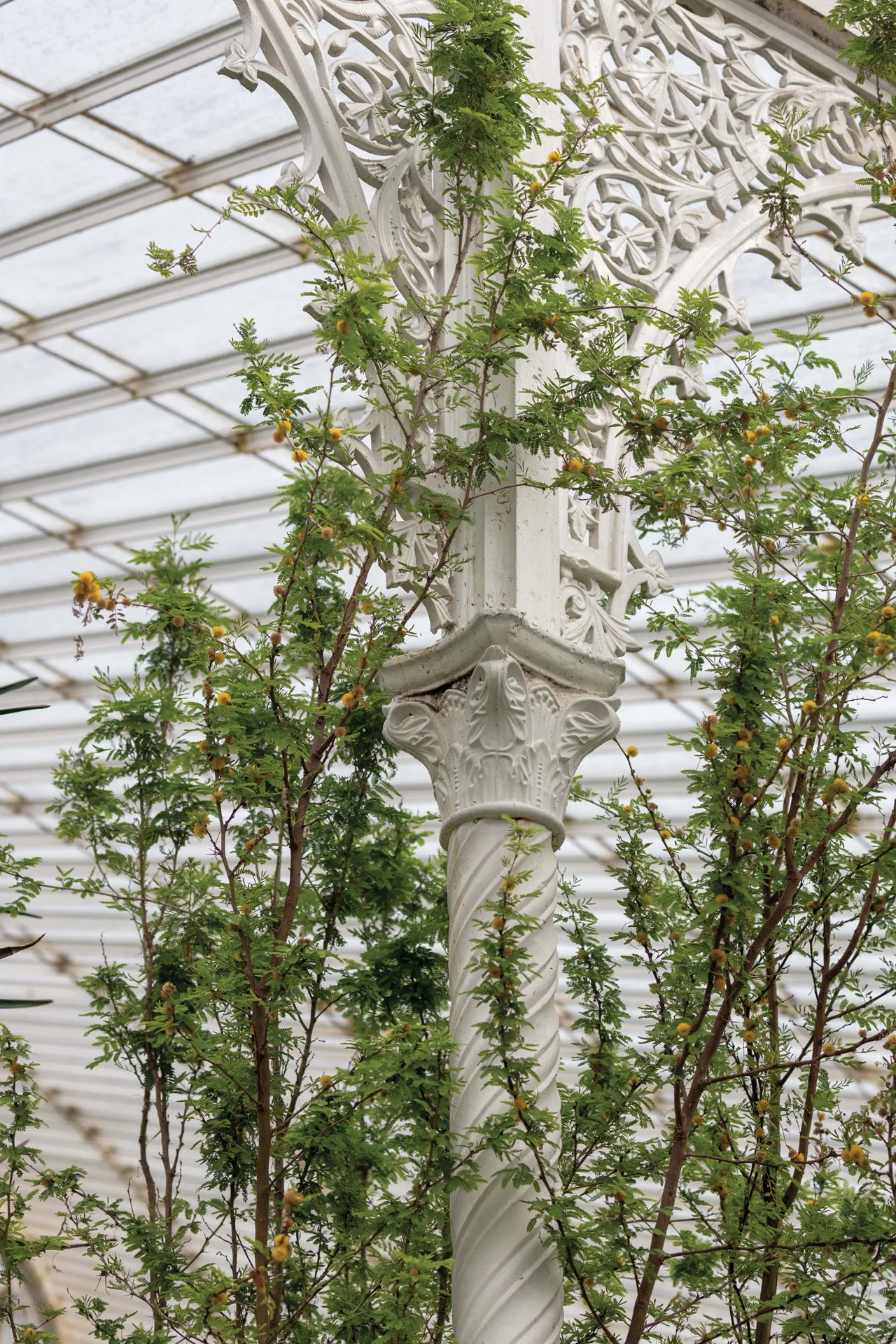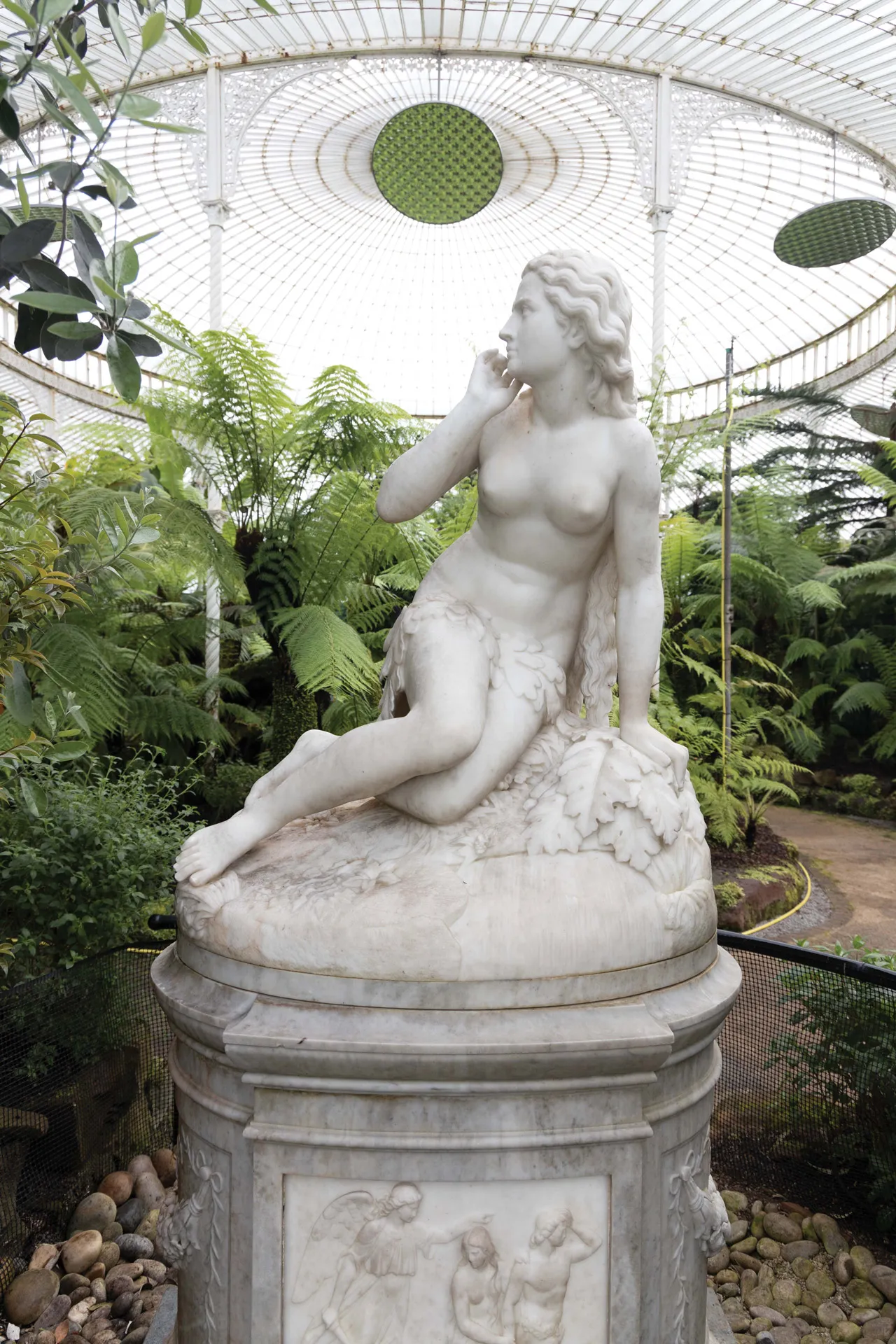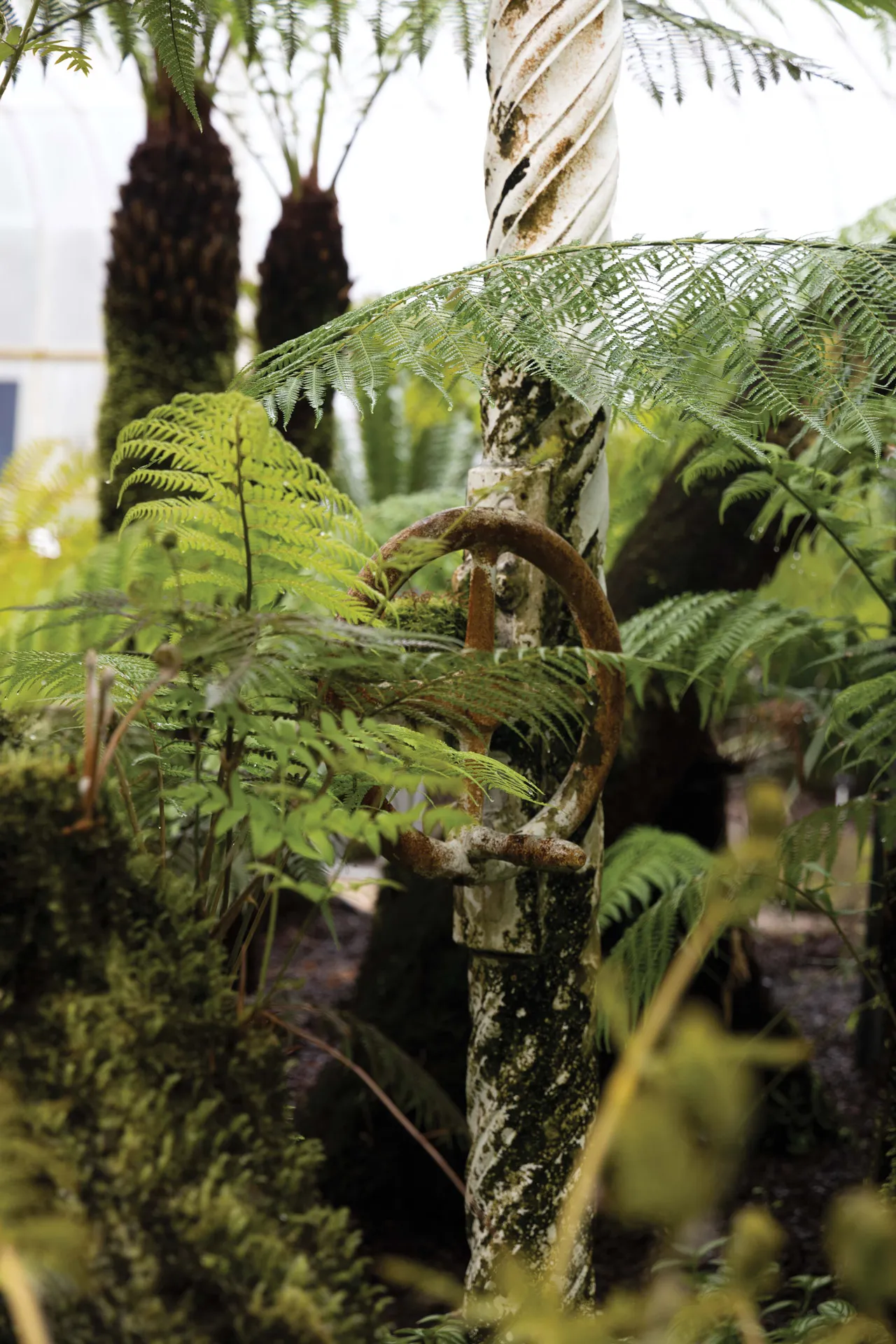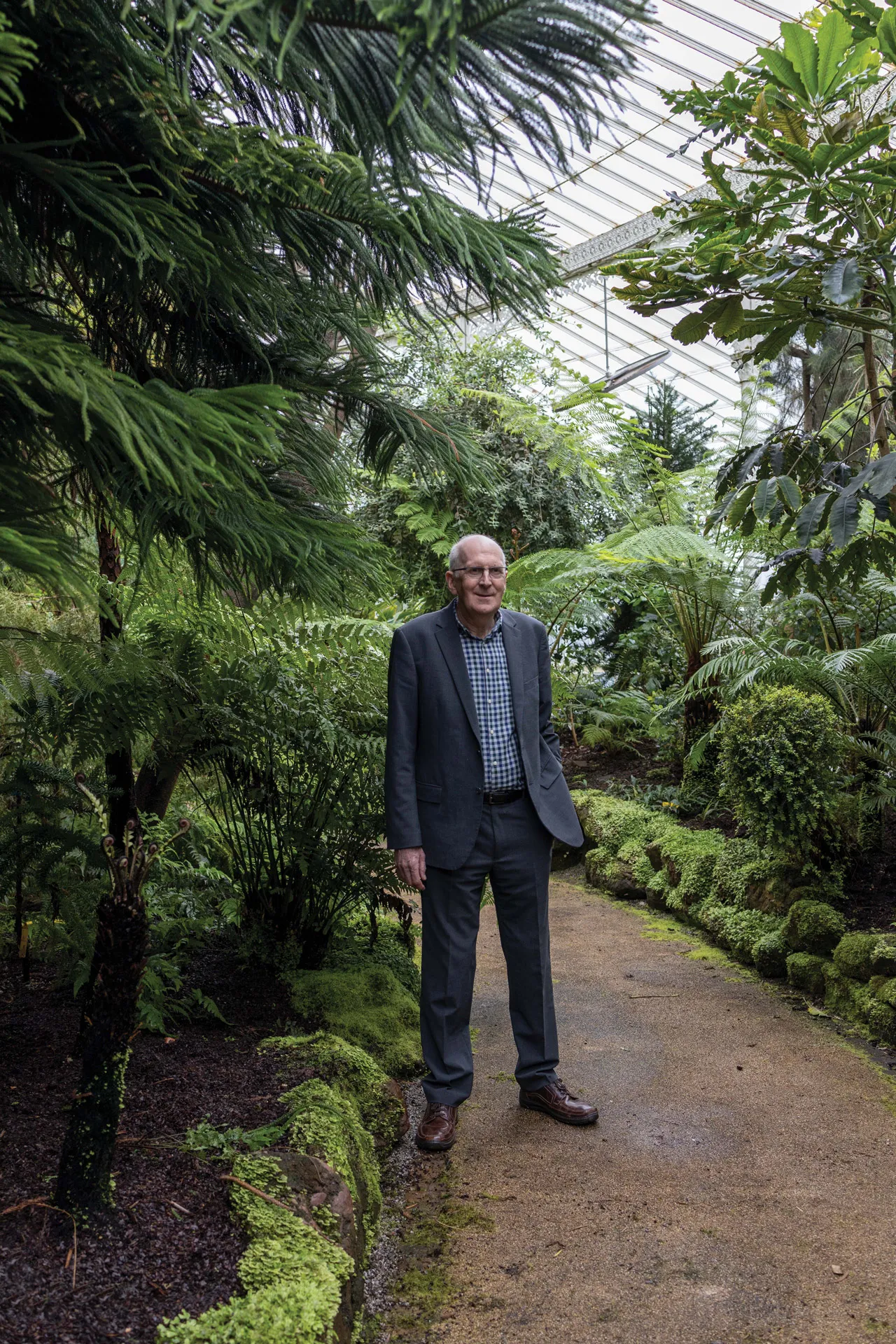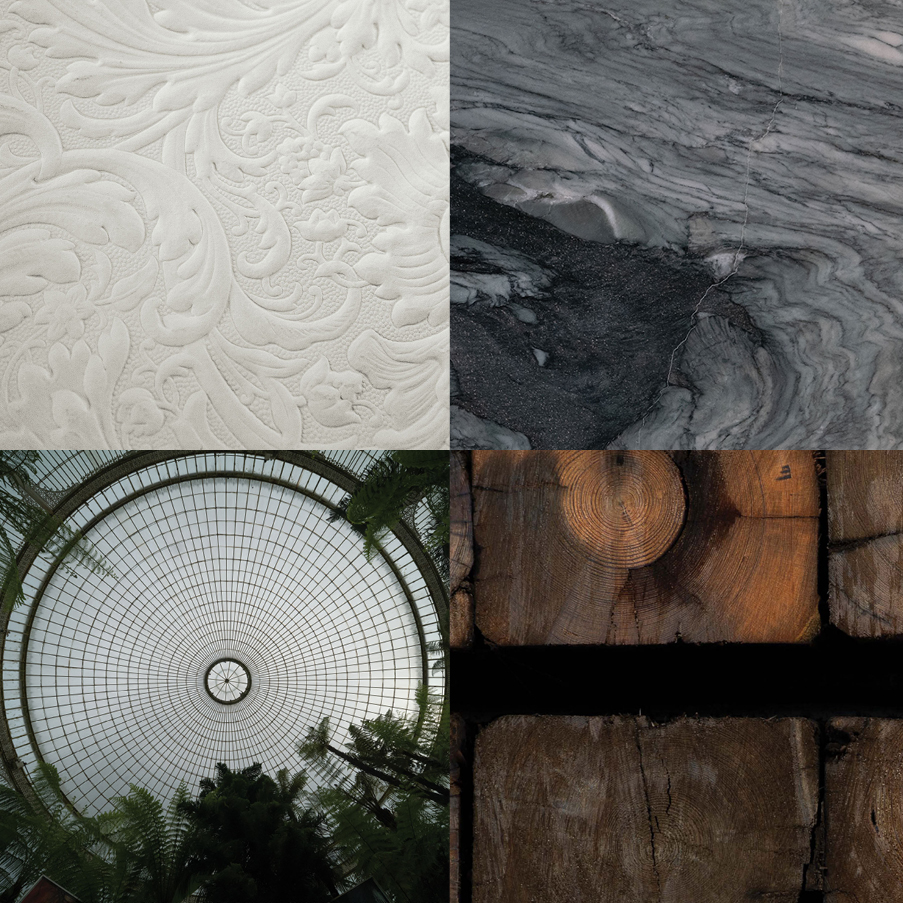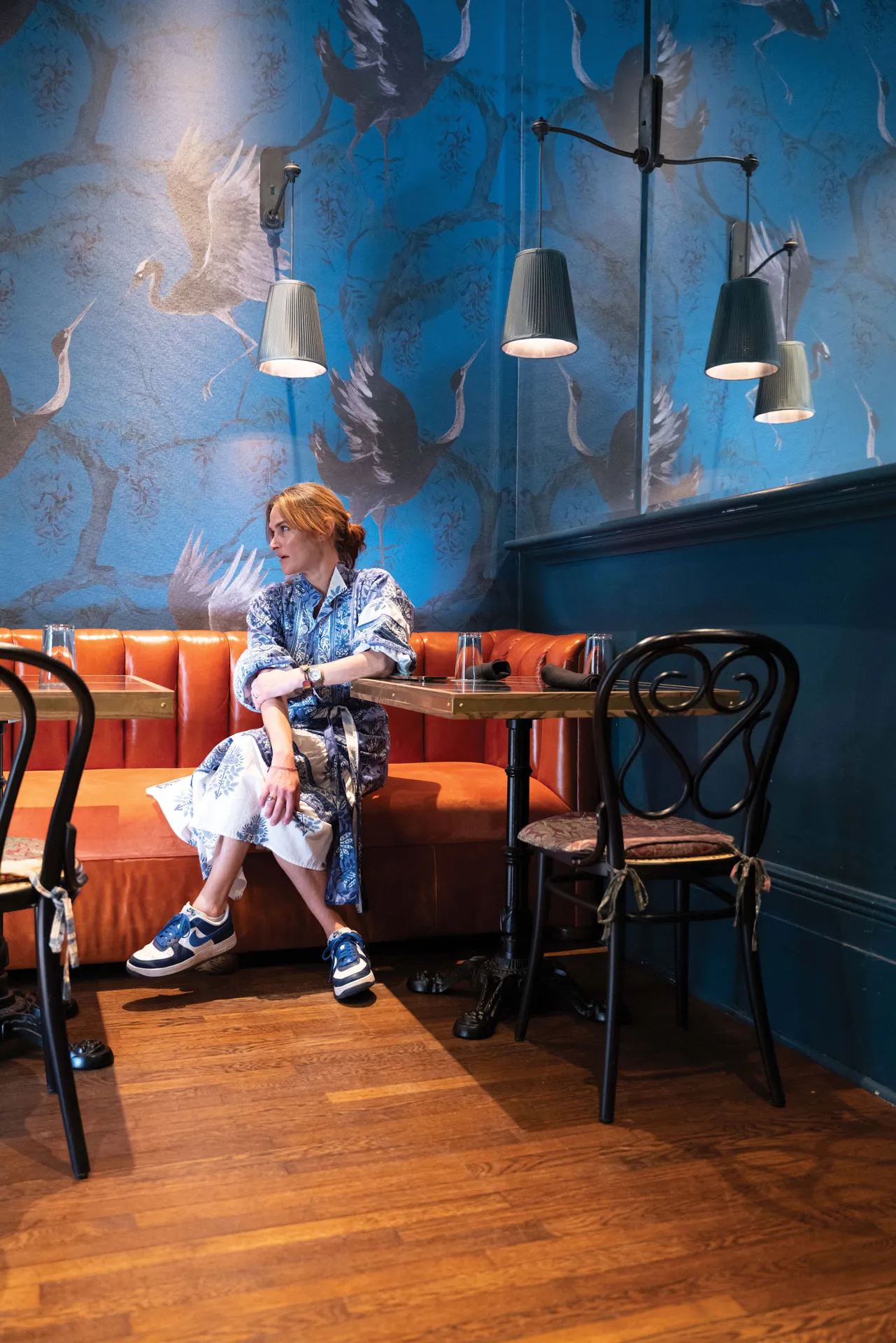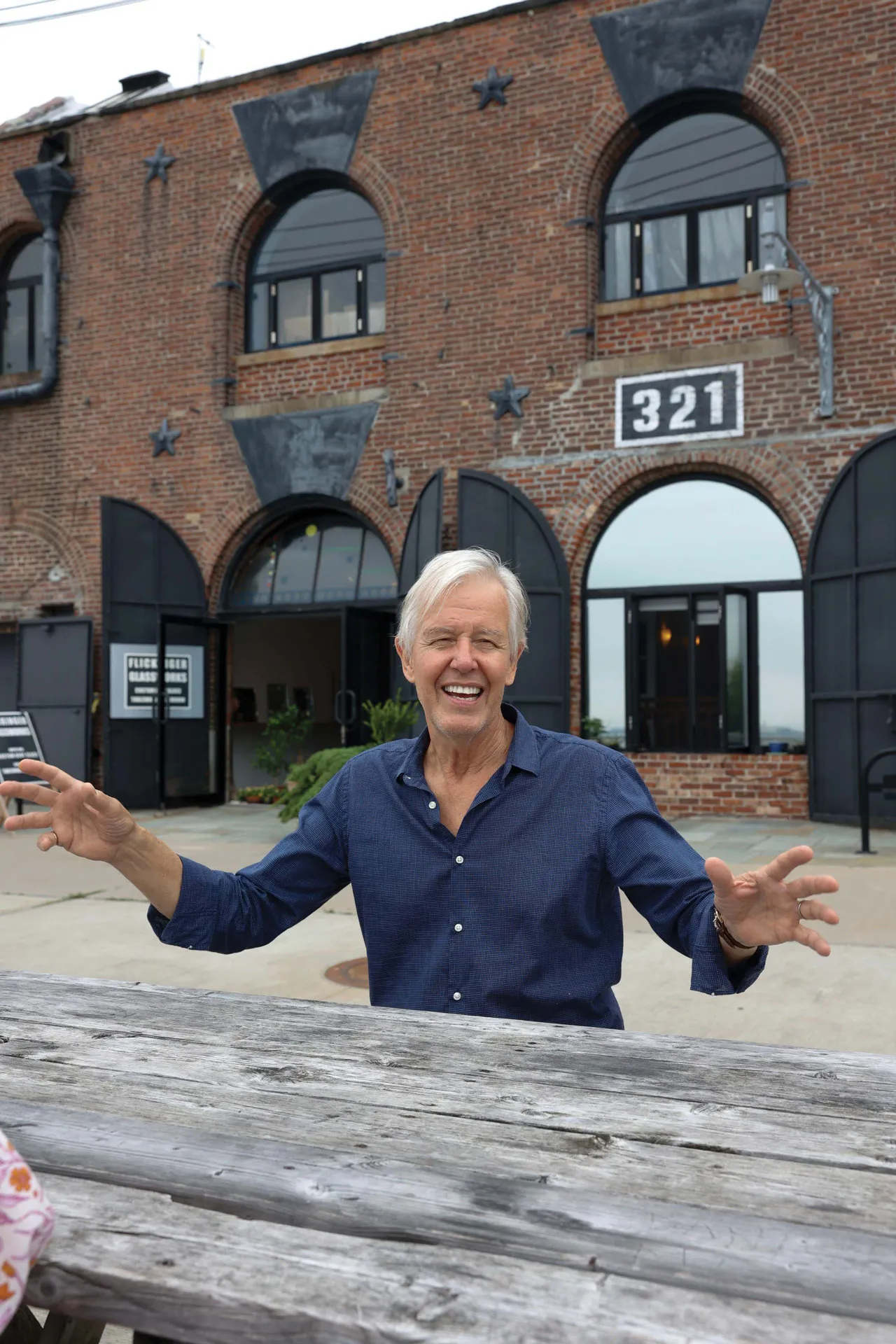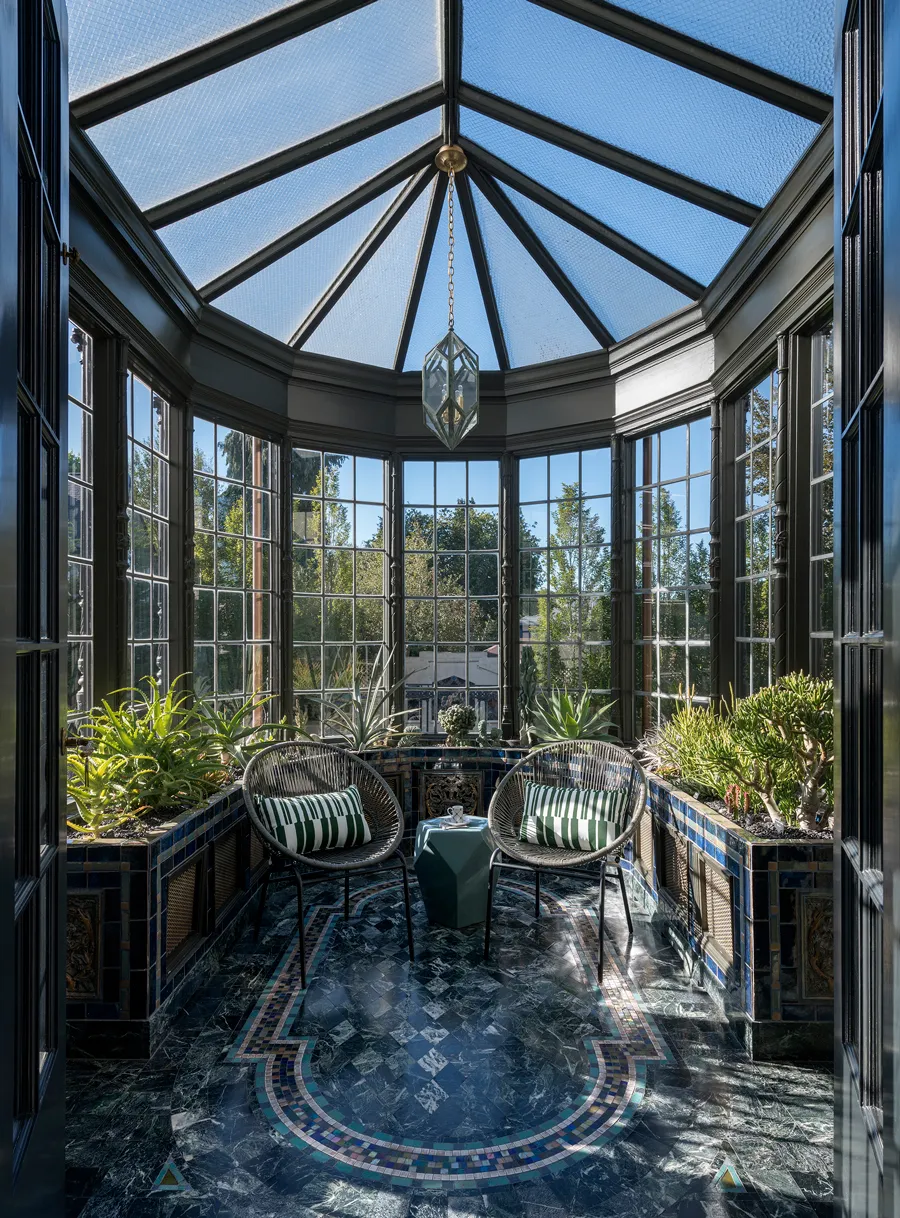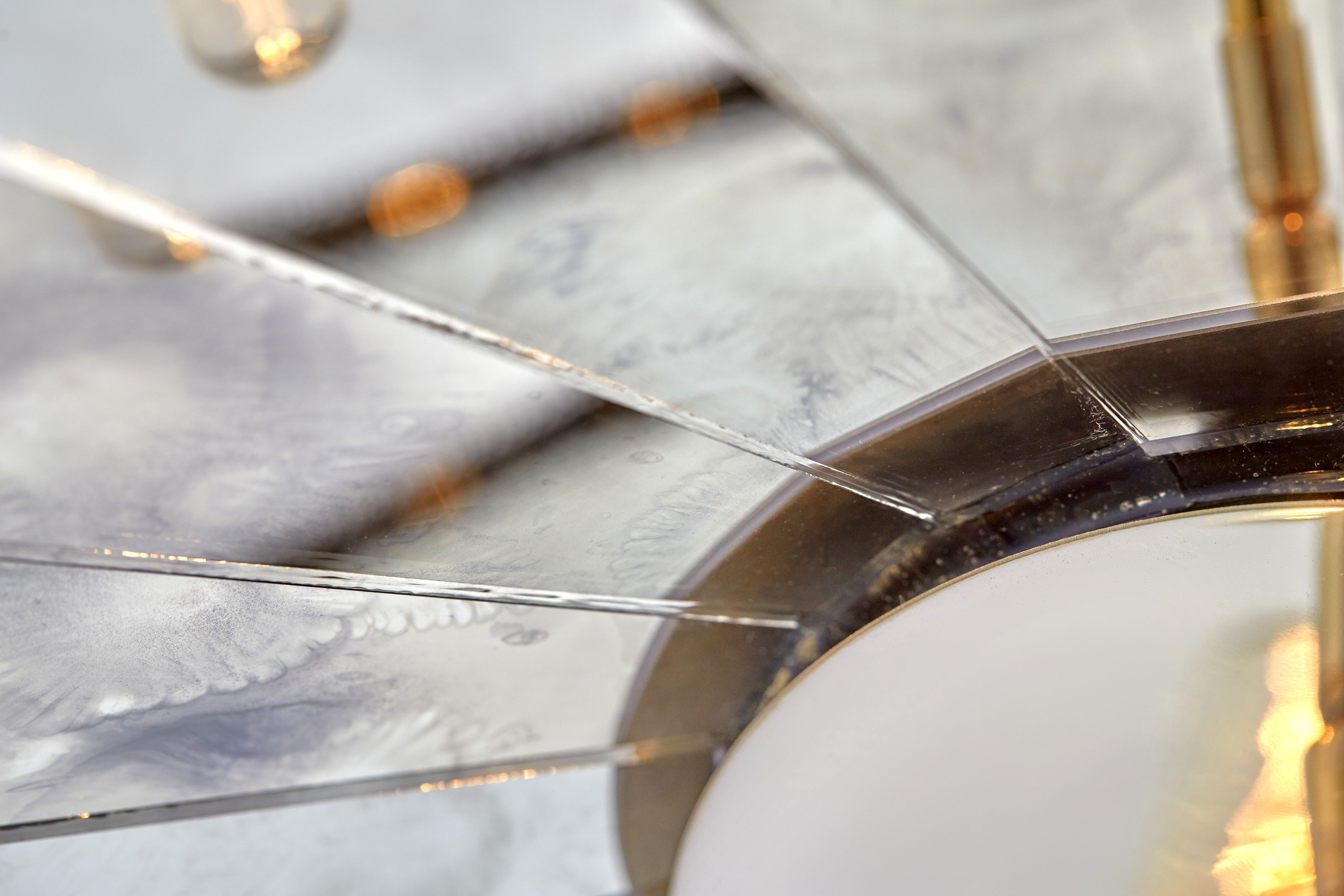PANE
STAKING
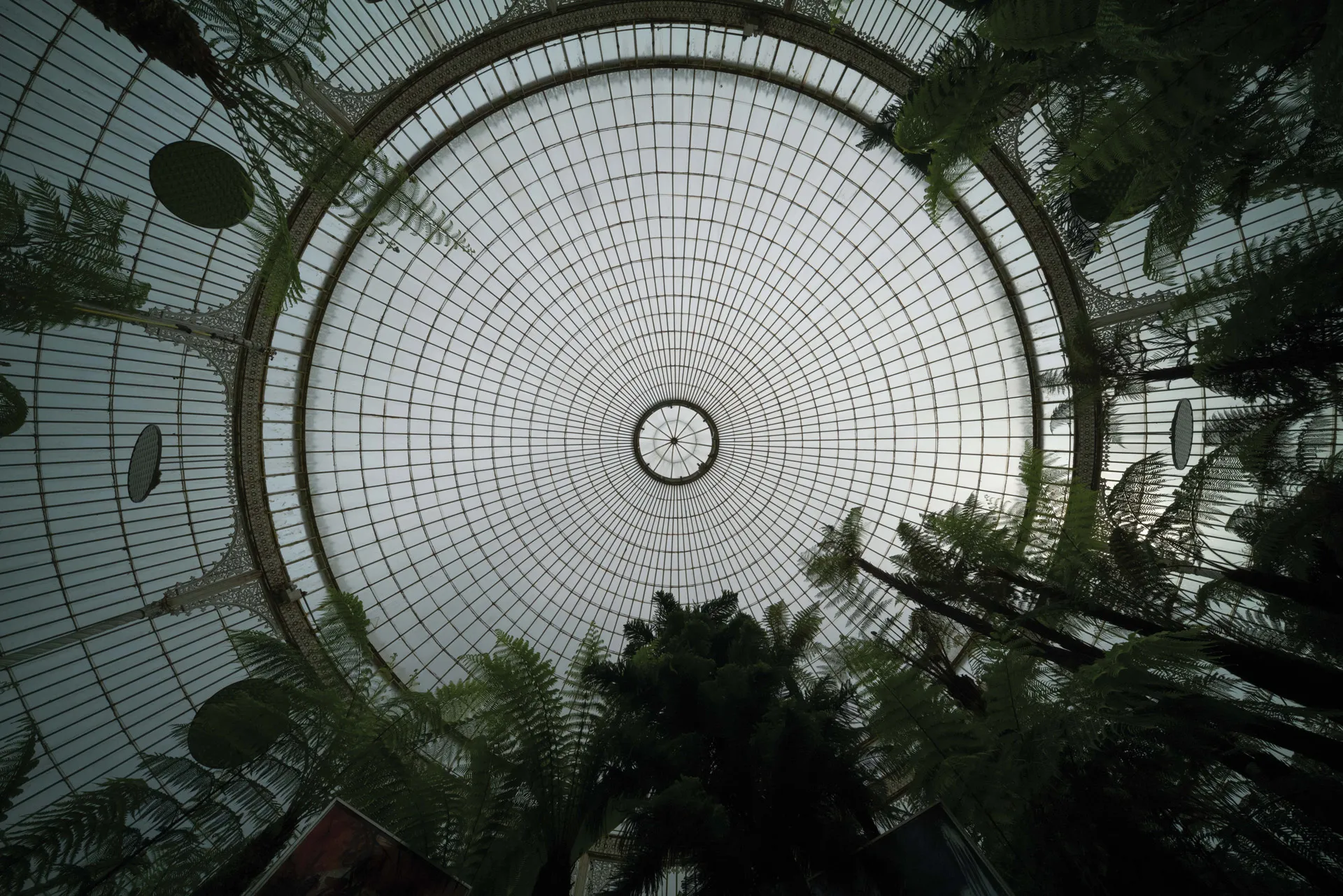
Even amidst the spectacle of the new season, the Botanic Gardens’ pièce de résistance is neither flora nor fauna but Kibble Palace, a glasshouse heralded as one of the United Kingdom’s architectural and engineering wonders. The palace is constructed solely of glass and iron, giving it the appearance of an immense lantern hovering over the eastern quadrant of the gardens. It, too, was planted here, with roots recounting a curious history. But after a century and a half, as the Botanic Gardens have endured varying seasons of bloom and decay, growth and dormancy, Mr. Kibble’s glasshouse remains a breathtaking specimen of Victorian ingenuity, now housing towering ferns and plant specimens from around the globe.
When he turned 15, Ewen’s mother showed him how to navigate the bus route from his rural village so he could begin an apprenticeship as a gardener in Glasgow’s parks. “My mum insisted that I get proper training,” says Ewen. He first worked in the Botanic Gardens during his third and fourth year of instruction (1972–74) before continuing horticultural studies at the Royal Botanic Garden Edinburgh. Ewen returned to Glasgow Botanic Gardens as a junior manager in 1978 when he first became responsible for the glasshouses, including the Kibble Palace. “In 1992 I became the boss” says Ewen. He and his wife, Fiona, and their two children lived on the grounds in the ‘West Lodge’ gatehouse, just yards away from the Kibble Palace. “We raised our family here. It was magical. At night my son and daughter had run of the place, riding their bikes all around. But I wouldn’t let them climb the trees” he recalls, “They weren’t happy about that.”
Ewen’s deeply personal connection to Kibble Palace is fitting, as the glasshouse, built in the late 1860s, was a personal passion for its creator and namesake, John Kibble. A Victorian eccentric, dabbler, engineer and amateur photographer, Kibble is known for inventing a quirky floating bicycle that he reputedly pedaled across Loch Long, as well as the largest camera ever made. With a 13"-diameter lens and 44-pound plates, it was mounted on wheels and drawn by a horse. Perhaps his fascination with photographic glass plates led to Kibble’s interest in glasshouses, but “that’s speculation. We really don’t know that much about him,” Ewen says.
These tree ferns from Australia, today comprise an official National Collection of tree fern and remain Kibble Palace’s distinctive feature. “Some date back to 1880,” explains Ewen, who—tall and lanky, distinguished and soft-spoken—seems to resemble them, in the way dog owners often resemble their pets. “Ferns are primitive plants. These are like dinosaurs, really,” he adds. Indeed it’s hard not to be awed, to feel removed to another place and time, as one walks beneath the canopy of uncurling, feathery fronds reaching up toward the lacy Victorian ironwork—imagine Jurassic Park meets Downton Abbey.
Having tended these ferns and the Botanic Gardens’ other inhabitants, including a prized begonia collection, daily for four decades, Ewen has an intimacy with the plants, a reverence, but he’s not one to play favorites. He’s just as proud to point out the robust Kahili ginger (Hedychium gardnerianum) planted by Princess Anne when she visited (Ewen also gave Prince Charles a private tour, a career highlight for him), as the funky 300-year old grass tree from Australia, plus a whole wing of carnivorous pitcher plants and Venus fly traps. He equally loves the conifers and alpine plants, and “I’m keen on roses too,” he adds, noting the world rose collection opened by Princess Tomohito of Japan in 2003. For Ewen, it’s all about sharing his passion and knowledge of the plant kingdom, and that kingdom’s historic glass palace.
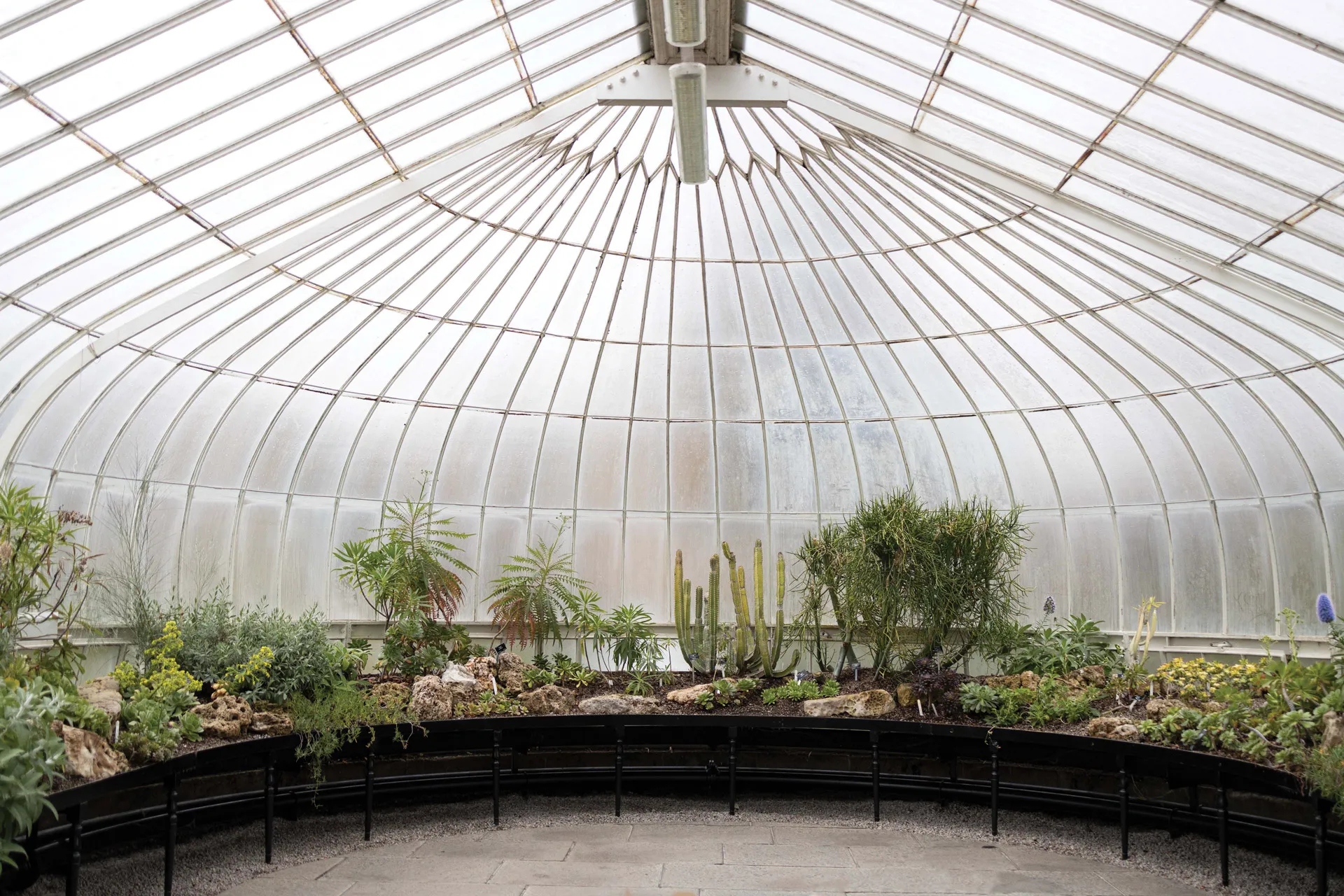
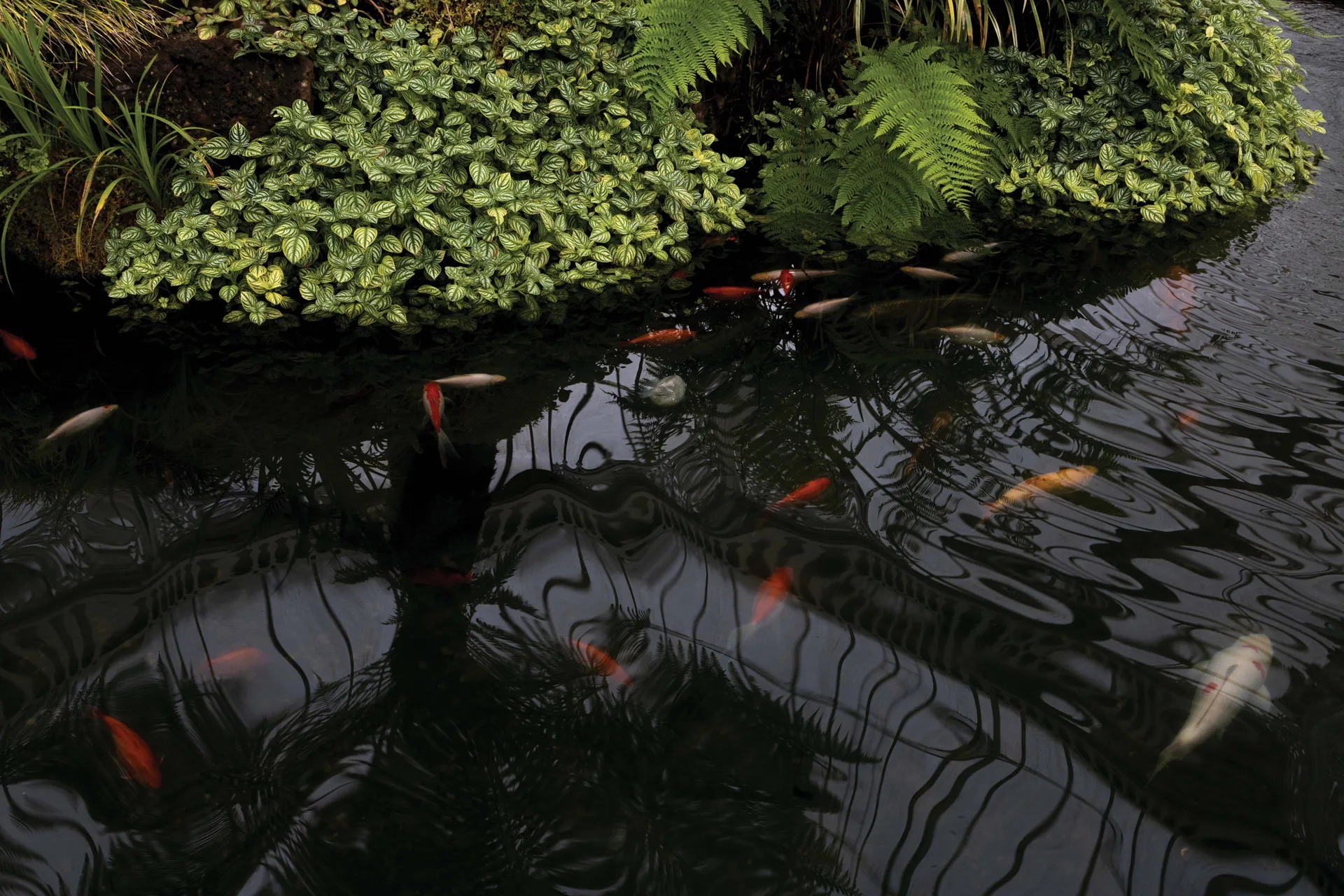
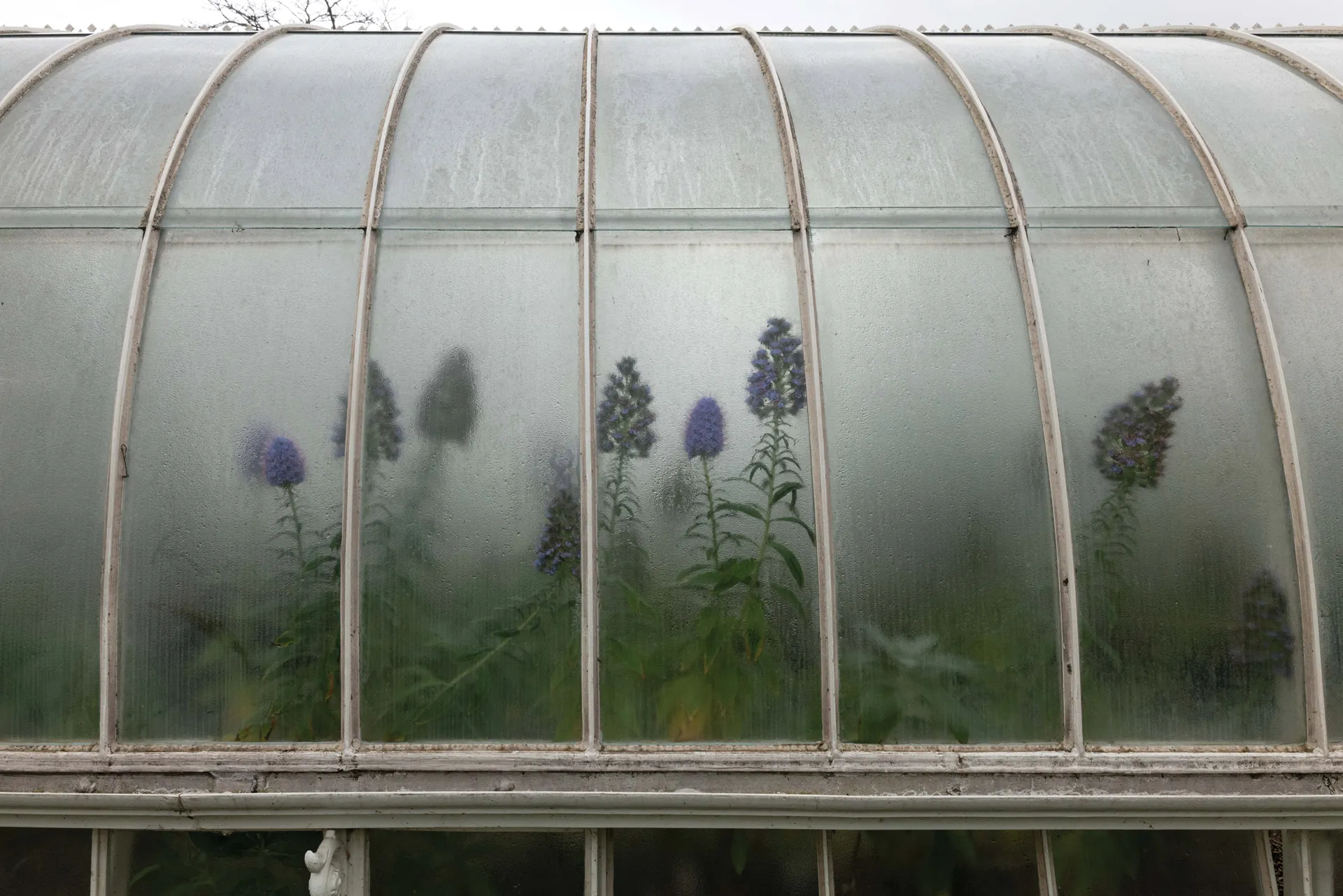
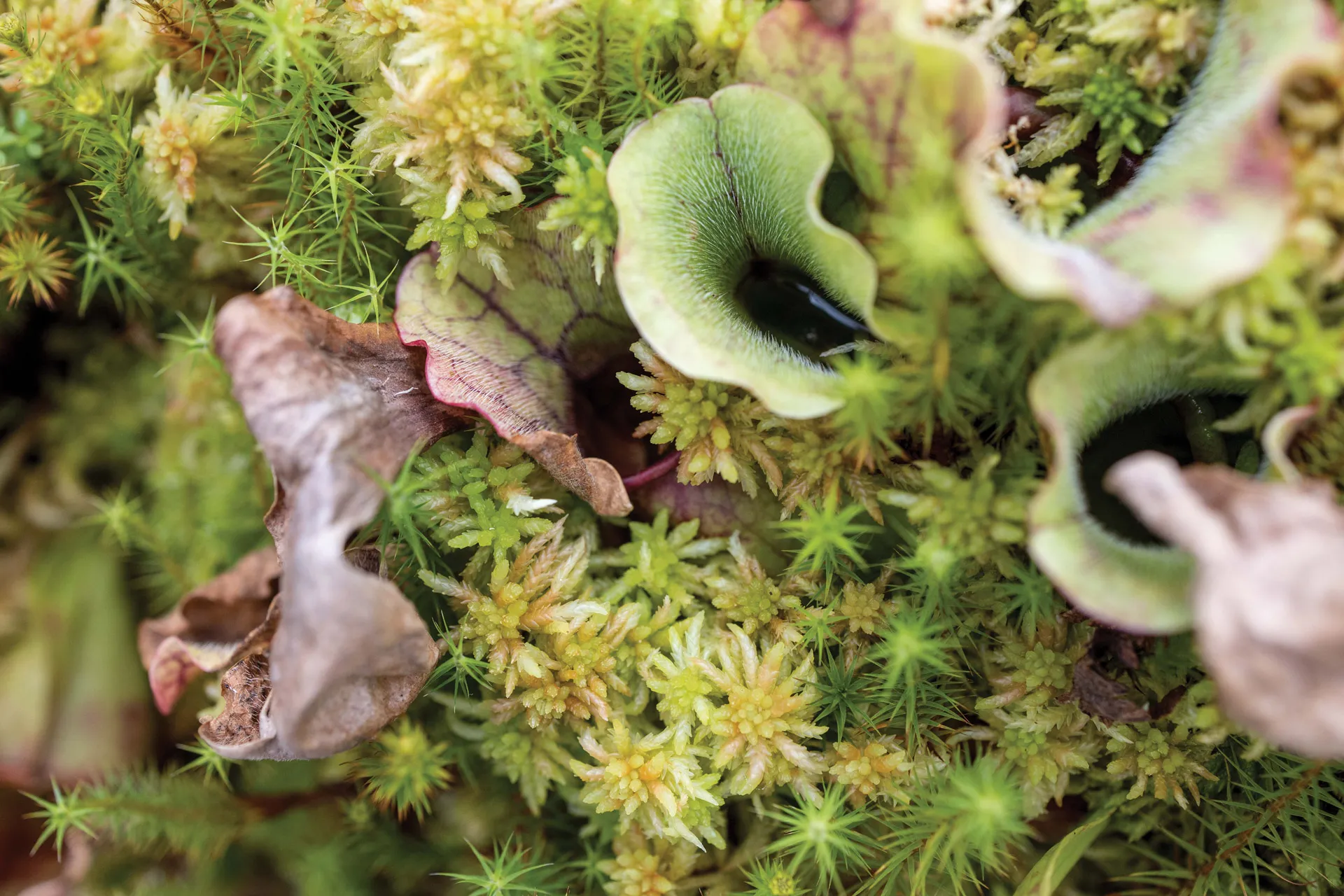
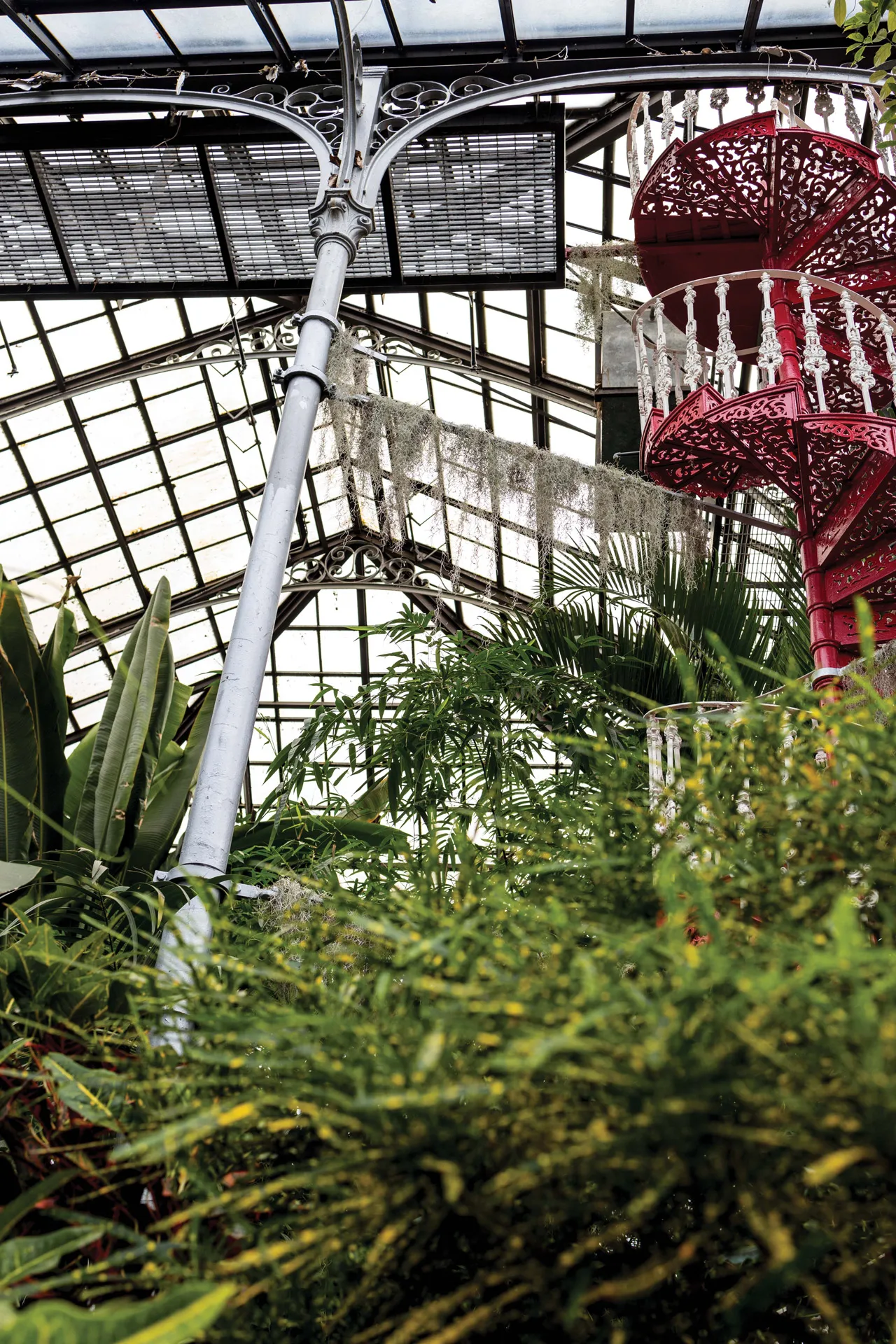
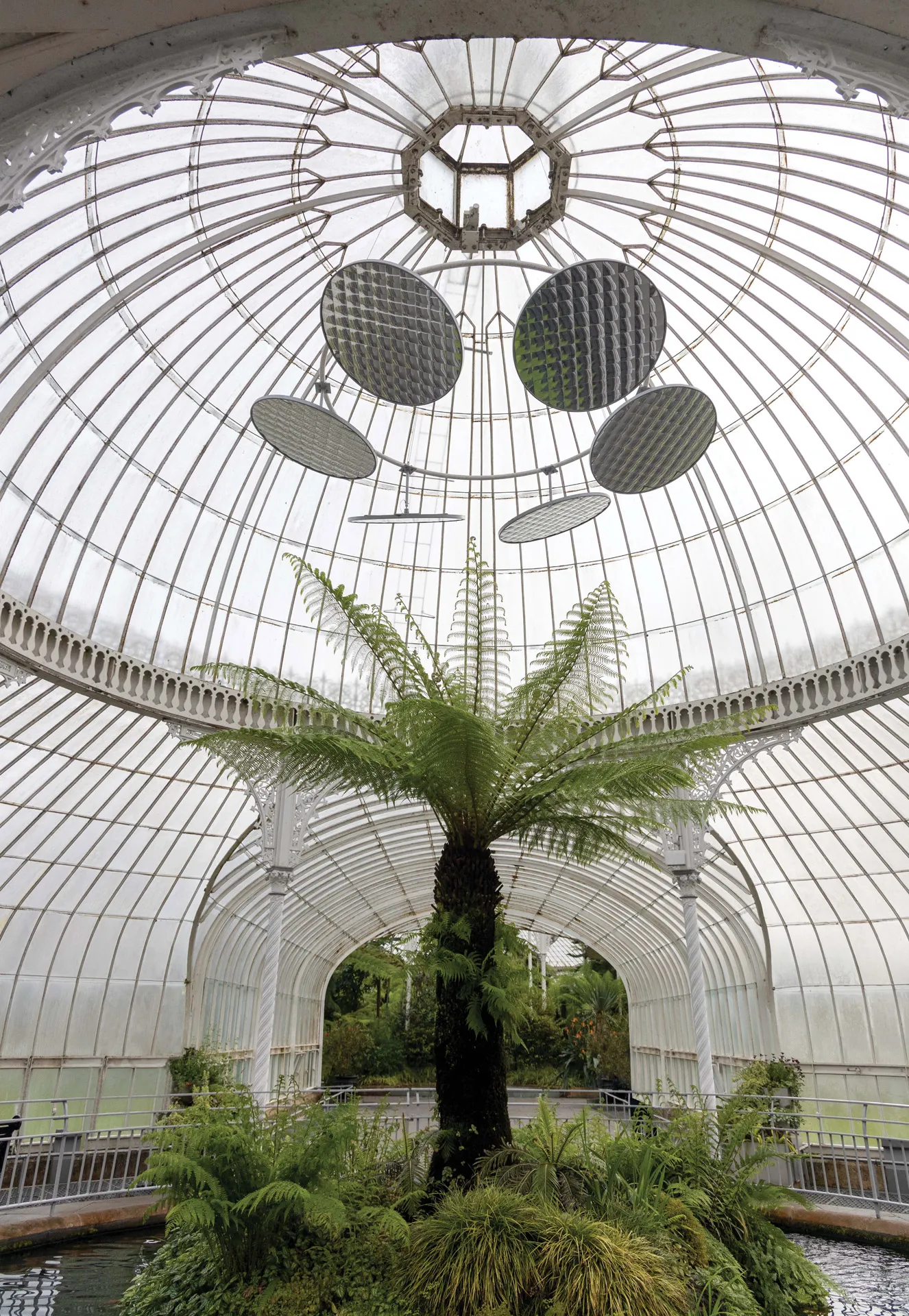
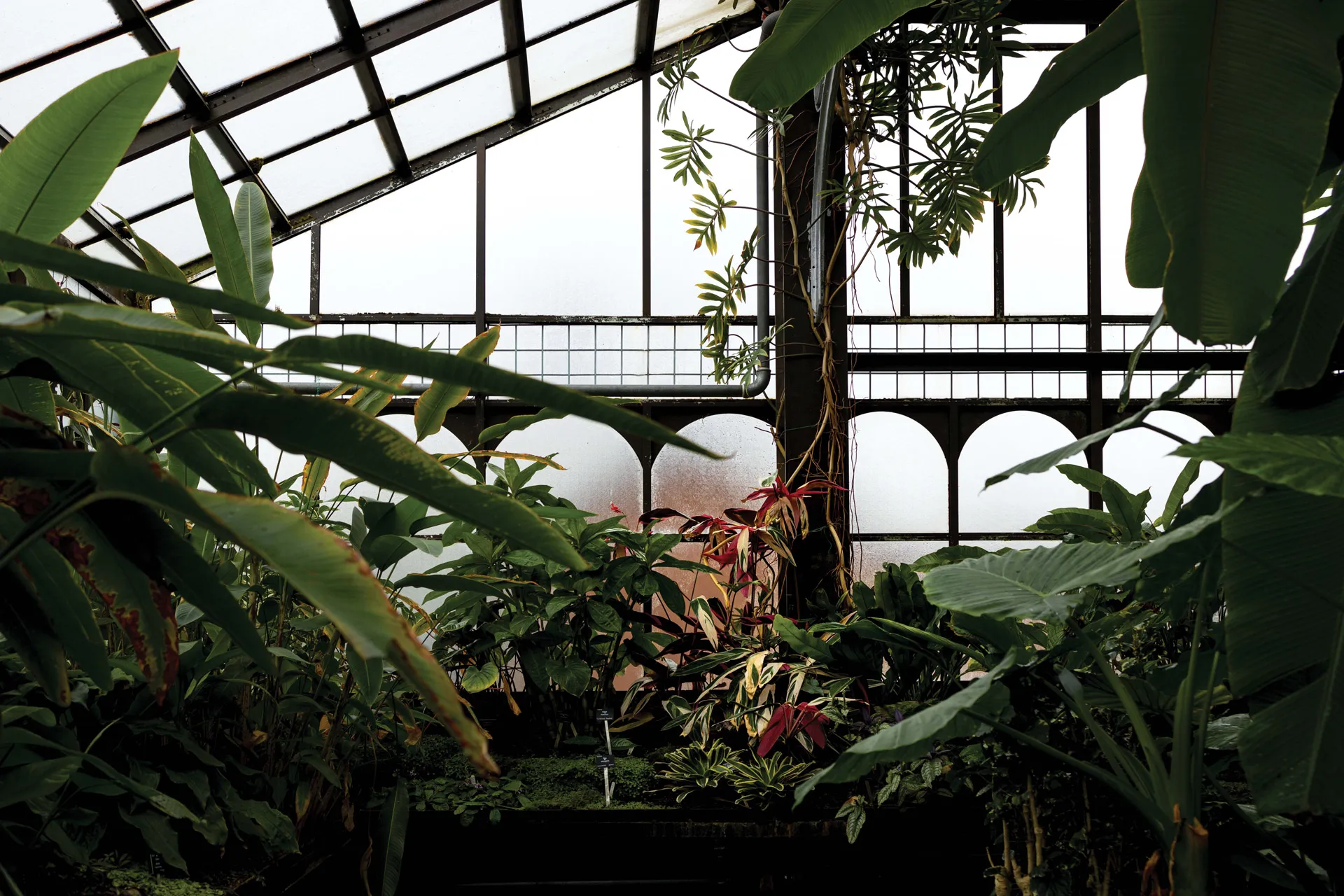
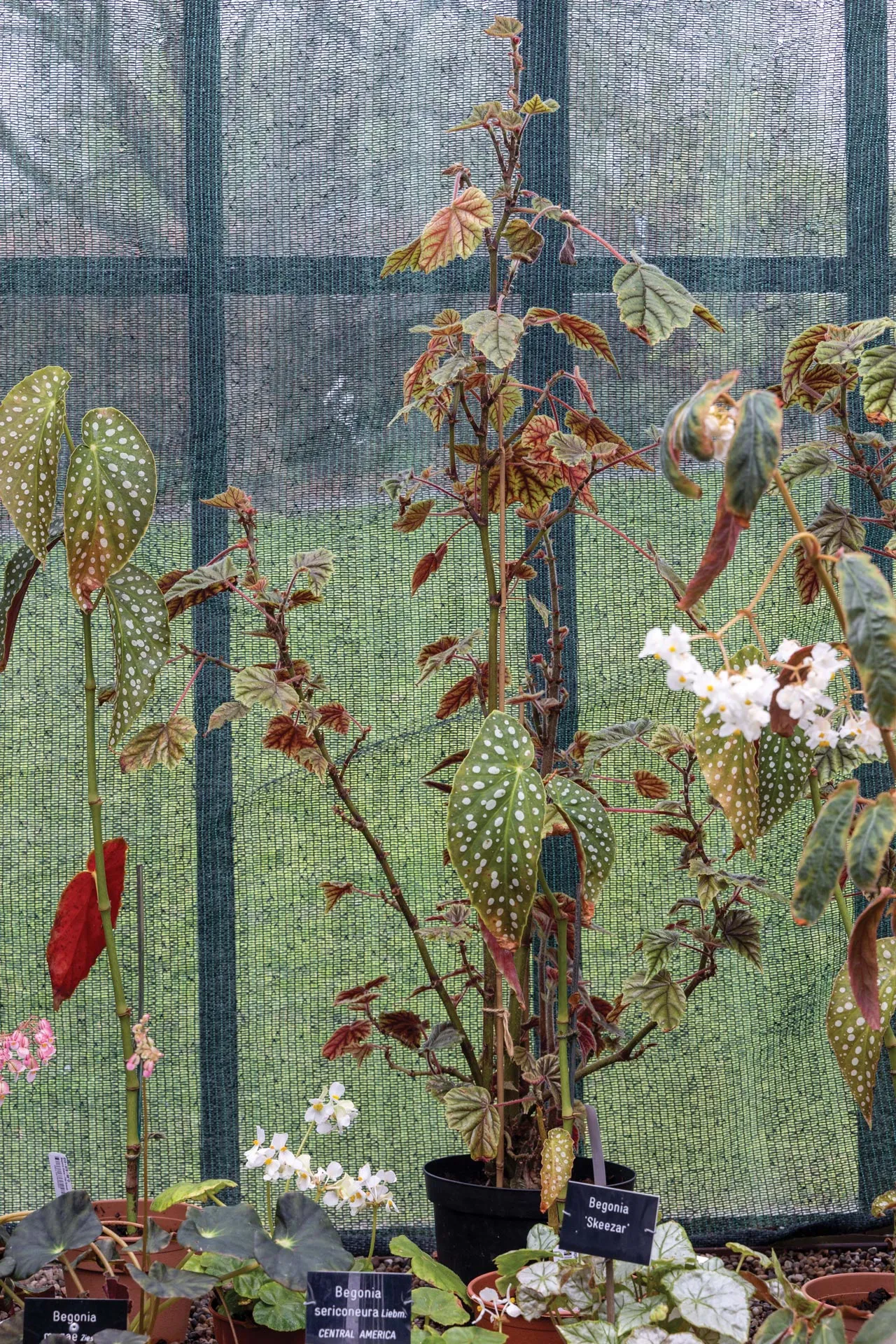
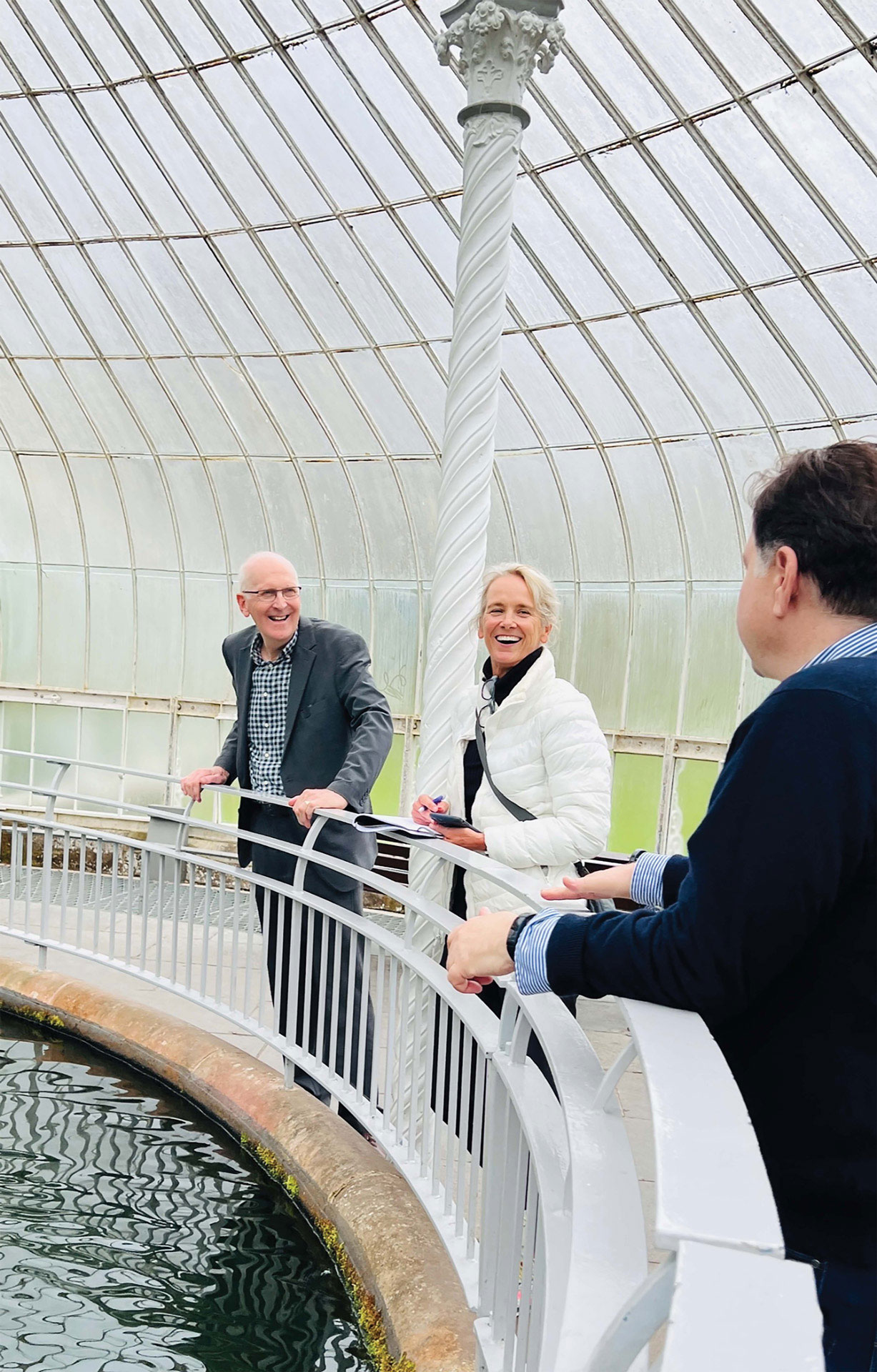
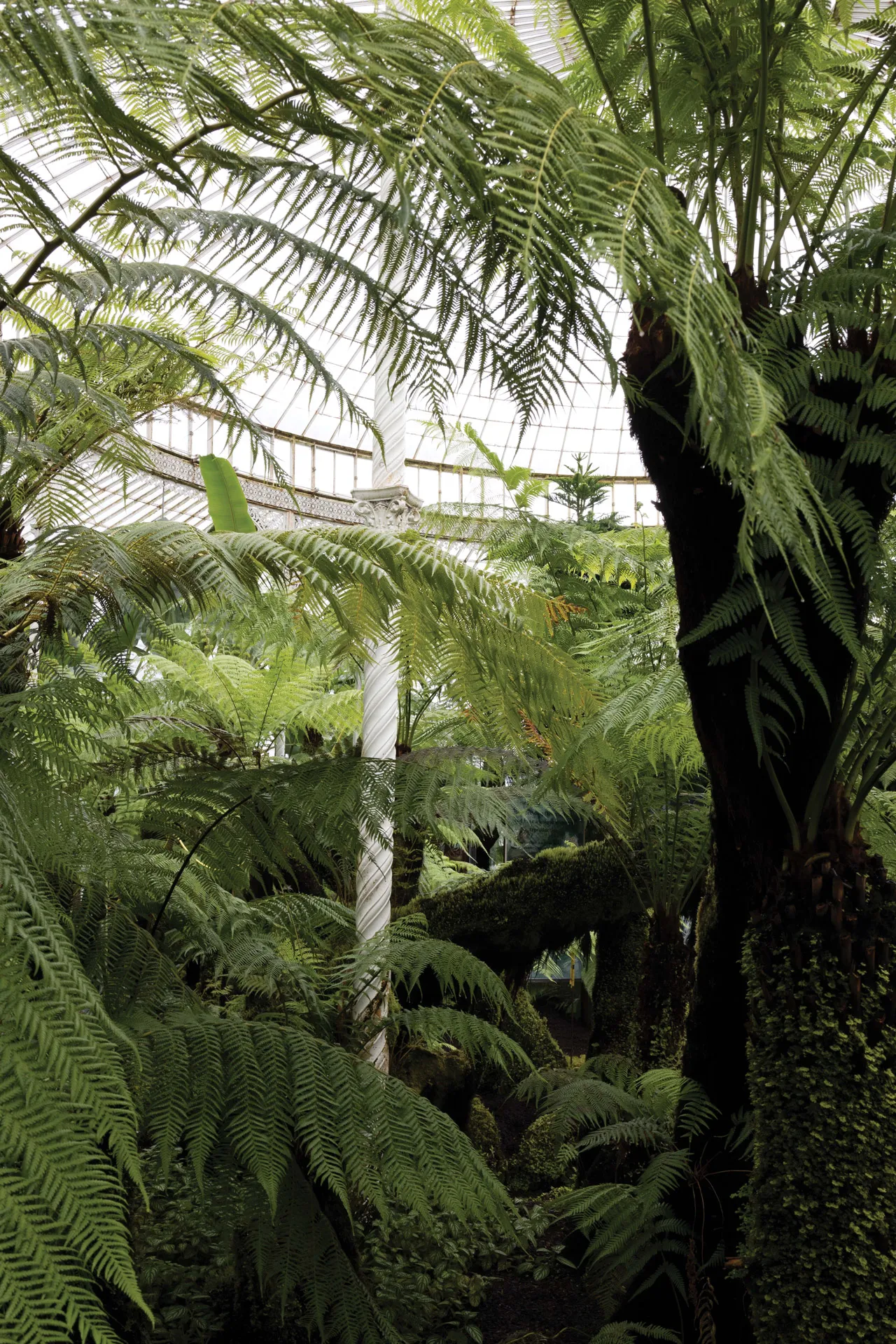
But now that mostly every pane of glass has been replaced (minus one remaining historic row of them), every bit of iron restored or in many cases recast, every magnificent fern replanted, plus hundreds of tons of rock brought in from Northern Scotland and goodness knows how much dirt, the venerable Kibble Palace is once again a breathtaking work of art, and primed to stand, as a feat of innovation and artistry, an ode to the enduring beauty of glass and the natural wonder of plant life, for another few centuries.
Looking around the luminous dome with its enchanted fern forest, Ewen’s eyes flash a wee twinkle. “You can see why we’re proud,” he says. “If Kibble came back today, I think he’d be amazed to see his glasshouse.”
